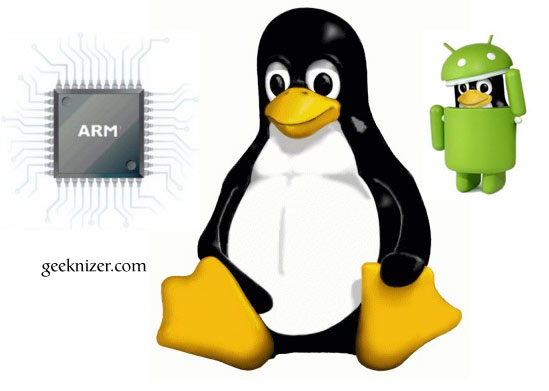ARM has been integral part of Linux systems for years, and they have only changed for better, always.
Linux Kernel 3.7 is now available out in the Open Source, and it comes with a huge list of improvements.
What’s New in Linux Kernel 3.7
To summarize:
- Main features
- ARM multi-platform support
- ARM 64-bit support – Support for ARM v8 64-bit memory addressing
- Cryptographically-signed kernel modules – The kernel can optionally disable completely the load of modules that have not been signed with the correct key – even for root users
- Btrfs updates: fsync() speedups, Hole punching,
- perf trace, an alternative to strace: Easier, and more powerful tracing system
- TCP Fast Open (server side): Speeds-up TCP connection establishment, speed improvement between 4% and 41% in the page load times.
- Experimental SMB 2 protocol support: Better networking with Windows PCs/Servers
- NFS v4.1 support: pNFS, aka “parallel NFS” in clustered server deployments provides scalable parallel access to a given filesystem or individual files distributed among multiple servers.
- Virtual extensible LAN tunneling protocol: Designed for Virtualized networks, VXLAN is a tunneling protocol that allows to transfer Layer 2 Ethernet packets over UDP.
- Intel “supervisor mode access prevention”: SMAP, a new security feature that forbids kernel access to memory pages used by userspace.
- Driver and architecture changes: More instruction-set support for x86, ARM, MIPS, Sparc64, etc. and Drivers, Graphics, Sound, Networking, USB improvements.
- Core Improvements: Core dumps optional, RCU locking, etc.
- Filesystem Improvements in ext4, btrfs, XFS, UDF, JFS, NFS file systems.
- Block: Support for WRITE SAME on SCSI, ioctl to zero, UBI for flash devices with Fastmap, DM RAID.
- Crypto: Parallel AES_NI pipelines, IPsec ESN support, RSA signature verification, X.509 for binary.
- Security: Improvements, additions in Smack, Yama, Integrity Measurement Architecture
- Perf: kvm for even analysis, perf probe & tools.
- Virtualization: Faster virtualization, more hardware acceleration support
- Networking: New IPv6 specs, NFC, GRE over IPv6, etc.
The most crucial is ofcourse the ARM Multi-platform support which is a good news for Linux portables, especially Android.
A typical Linux distribution for x86 PC computers can boot and work with hundreds of different PC (different CPU, GPU models, different motherboards and chipsets, etc) using a single distribution install media. However, this inter-operatability wasn’t there in Linux ARM world. The ARM ecosystem has historically been driven by the embedded world, where hardware enumeration isn’t even possible in many cases, so each ARM kernel image was targeted for a specific embedded hardware target. It couldn’t boot in other ARM systems. Linus Torvalds, Guru of Linux Kernel, once said “this whole ARM thing is F**** pain in the ass”.
But the solution is already here with effort from Olof Johansson, a Google Linux and ARM engineer, unified multi-platform ARM was ready to be included in Linux 3.7. Now with 3.7, ARM architectures can use one single vanilla Linux kernel while keeping their special device sauce in device trees.
Now, ARM developers will be able to boot and run Linux on their devices and then worry about getting all the extras to work. This will save them, and the Linux kernel developers, a great deal of time and trouble.
64-bit ARM support is another good news. Linux kernel 3.7 now supports 64-bit ARM processors. 64-bit ARM CPUs would commercialize in 2013, programmers now get the access to a 64-bit ARM architecture supported Linux OS.
TCP Fast Open would be appreciated by users and Web administrators alike. TCP Fast Open boosts the time it takes to establish a connection between a client and the server (browser and the server). TCP Fast Open can speed up Web page opening speeds from 10 to 40%.
pNFS for clustered environment would be the next big thing for Linux. Existing Network File System (NFS) systems get an upgrade to NFS 4.1 giving them ability to parallel NFS (pNFS). PNFS enables extremely fast and scalable parallel file access.
Full details, changelogs available on Kernel Newbies Linux 3.7 Website.
We write latest and greatest in Tech Guides, Apple, iPhone, Tablets, Android, Open Source, Latest in Tech, subscribe to us @geeknizerOR on Facebook Fanpage, Google+.
loading...
loading...

